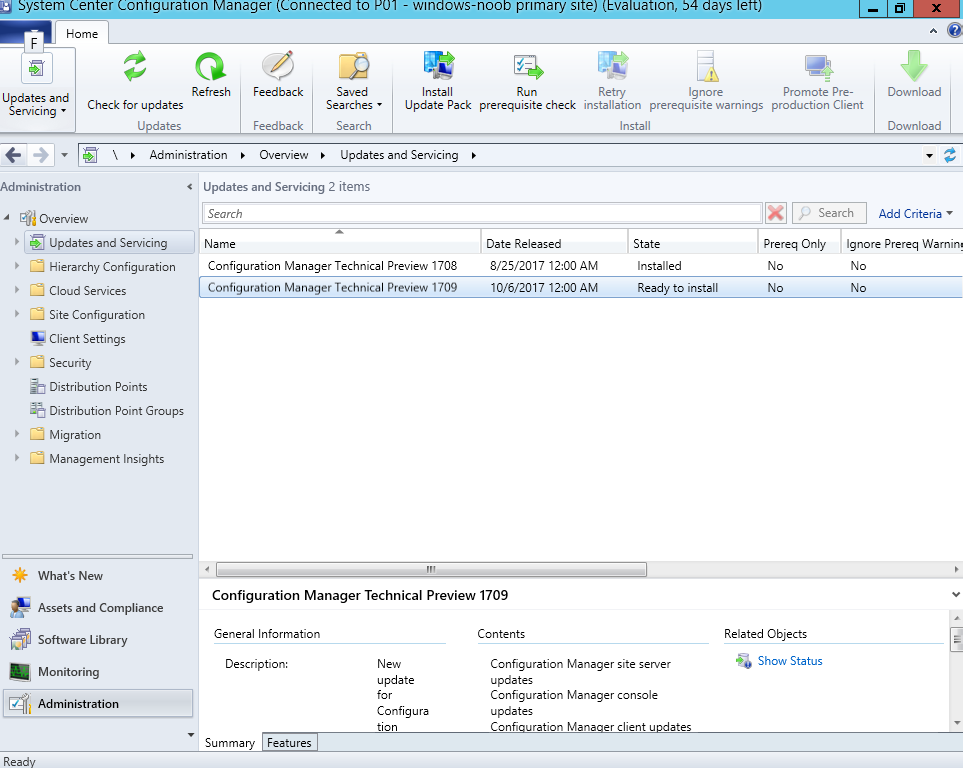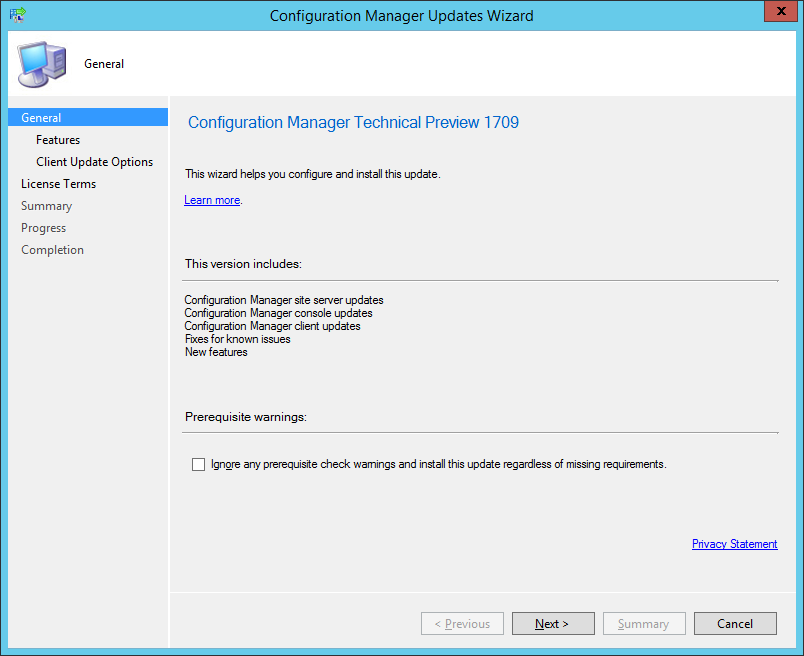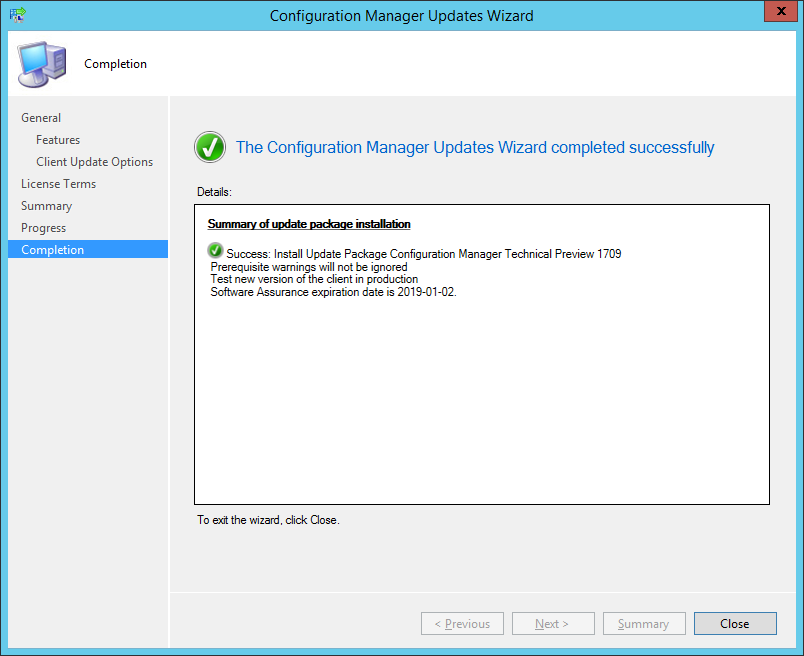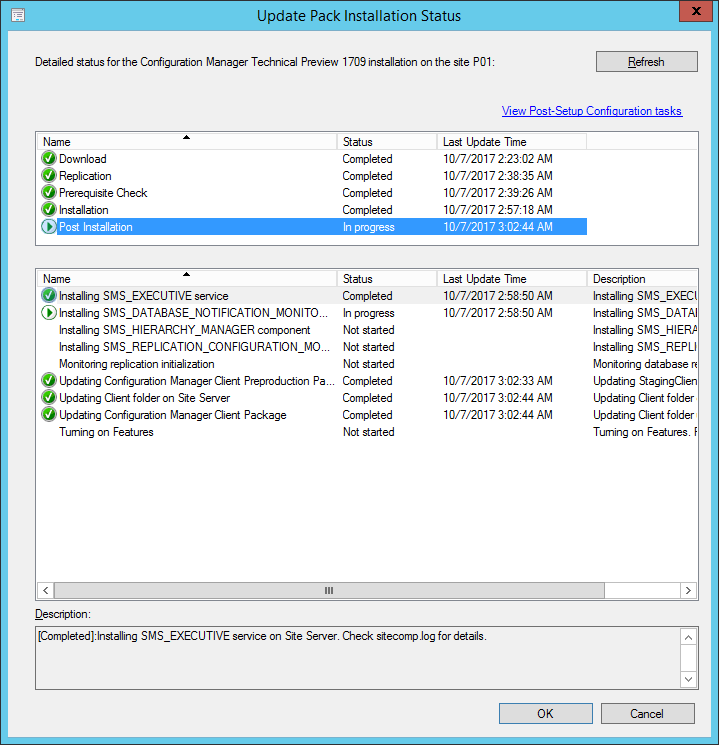Introduction
Another month has passed by and finally we get to play with the latest Technical Preview release of System Center Configuration Manager from Microsoft.
There are two main versions (of Configuration Manager) available:
- System Center Configuration Manager (Current Branch)
- System Center Configuration Manager (Technical Preview)
System Center Configuration Manager (Current Branch) is designed for use in production, for managing anything from small to very large Enterprises whereas System Center Configuration Manager (Technical Preview) is for lab environments only and is limited to 10 clients. The Technical Preview releases are released monthly, and contain the latest and greatest features being trialed in the product, and usually these new features are the result of feedback from uservoice.
Current Branch releases on the other hand are released only a few times per year and contain stable, tested features that are mature enough to release into production environments.
System Center Configuration Manager Technical Preview 1709 is now available. This release offers the following new features:
- Co-management – Co-management is a solution where Windows 10 devices with Fall Creators Update can be concurrently managed by Configuration Manager and Intune, as well as joined to Active Directory (AD) and Azure Active Directory (Azure AD) to provide a way for you to modernize Windows 10 management over time. You can read more about co-management here.
Note: If you have a hybrid MDM environment (Intune integrated with Configuration Manager), you cannot enable co-management. If you are interested in migrating to Intune standalone, see Start migrating from hybrid MDM to Intune standalone.
This release also includes the following improvement for customers using System Center Configuration Manager connected with Microsoft Intune to manage mobile devices:
- Improved VPN Profile Experience in Configuration Manager Console – VPN profile settings are now filtered according to platform. When you create new VPN profiles, each supported platform will contain only the settings appropriate for the platform. Existing VPN profiles are not affected. You can read more about this change here.
Installing this release
So how do you get Technical Preview installed ? There are two methods:
- Upgrade from a previous installation of Technical Preview (as shown in this guide).
- Do a clean install of Technical Preview 1703 (the latest TP baseline) by using the following guide and replace the base version in that guide with the TP1703 release and then upgrade.
Upgrading to this release
Once you have a Technical Preview release installed, in the Configuration Manager console browse to Administration, Overview, Updates and Servicing as shown below. Click on Check for Updates (in the ribbon)
Next, click on the OK button.
As instructed, read the DMPDownloader.log available in <drvletter>:\Program Files\Microsoft Configuration Manager\Logs, you can use CMTrace to do so.
And refresh the console by clicking on the Refresh icon in the ribbon, you should see the update pack is available to download,
So right click and choose Download,
and the state will change to Downloading..
and once it is downloaded the state will change to Ready to Install.
Installing the update
Right click the update and choose Install update pack.
A wizard appears. Click Next.
the Features included in the update pack will be listed.
Select your client update settings and click Next
accept the EULA and configure the software assurance expiration date
and click through to the summary
Monitoring the Upgrade
At this point you should monitor the CMUpdate.log available in <drvletter>:\Program Files\Microsoft Configuration Manager\Logs, you can use CMTrace to do so. This log will detail the installation of the update pack. You should also pay attention to the following log files present in the root of C:\.
- CompMgrProv.Log
ConfigMgrPrereq.log
ConfigMgrSetup.log
and after refreshing the console, the state of the update pack will change to Installing.
Clicking on Show Status will give you detailed info about the state the Installation is in, it is broken down into 5 distinct phases in the top pane:
- Download
- Replication
- Prerequisite Check
- Installation
- Post Installation
Selecting a phase will highlight what state the update is in, including what (if any) problems it has. In the screenshot below you can see it is in the Installation phase.
And after a while it should progress through to the Post Installation phase
And after refreshing the console you’ll be informed that a new version is available namely version 5.00.8559.1000.
and after a while the new console is installed.





















Pingback: How can I enable co-management in System Center Configuration Manager | just another windows noob ?